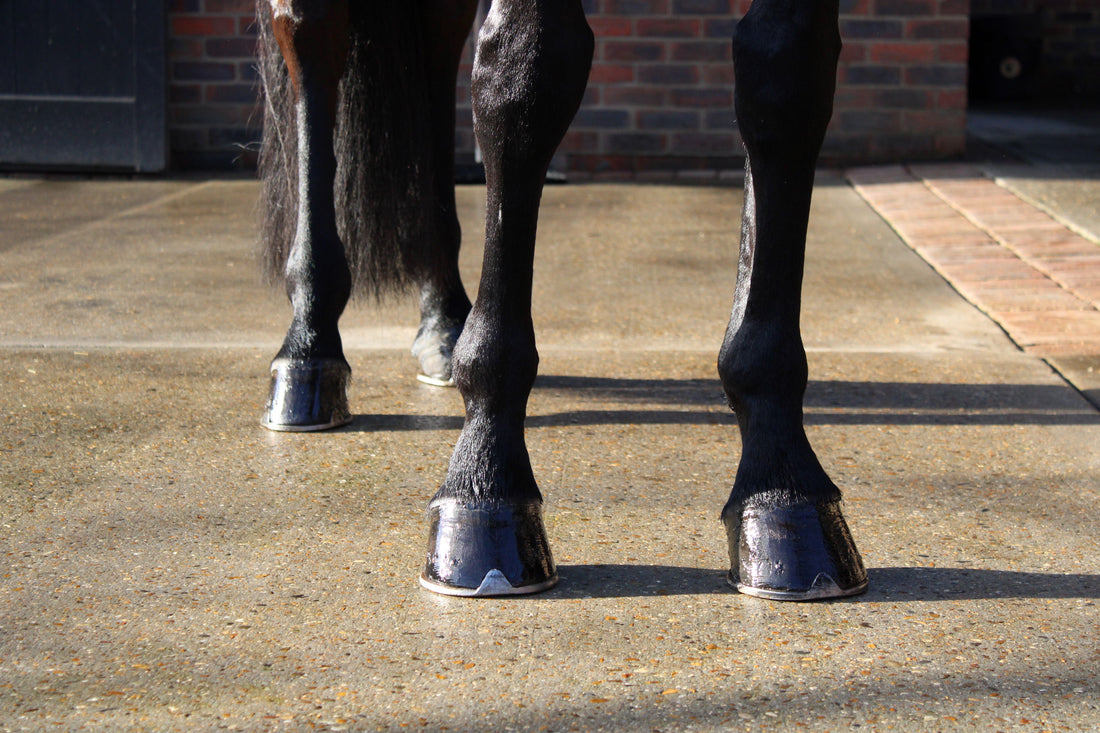Feeding for Hoof Health

Written by Briony Witherow MSc, BSc, RNutr.
Hoof supplements are some of the most widely used in the UK. This month’s blog explores what nutrients are needed to optimise hoof health, and best practice when it comes to feeding for hoof health.
Prerequisites
When feeding for hoof health, the first step should be to check the overall nutrient and protein intake. If the diet is not balanced with vitamins and minerals, or does not have sufficient quality protein, a hoof supplement is likely to be less effective.
Key Ingredients in Hoof Supplements
Typical ingredients that you may see within hoof supplements are listed below. While many are identified as key constituents of the hoof wall, to date, hoof supplements containing a combination of ingredients have not been the focus of much research.
- Amino acids (methionine, lysine, cystine, glycine)
- Minerals (calcium, zinc, sulphur, copper.
- Vitamins (biotin, vitamin C)
- Omega 3 fatty acids
- MSM
What do we know about Biotin?
- Dietary intake of 3-4mg/100kg body weight per day (15-20mg per day for a 500kg horse) has been shown to have therapeutic effects for horn quality when fed long-term (higher intakes of up to 30mg have also been suggested).
- Therapeutic intakes of biotin for more than six months have been shown to improve the structure and strength of horn and improve growth rate.
- Where biotin supplementation has been reduced or removed completely after long-term supplementation, hoof health has declined.
Feeding Duration is Key
As the hoof wall grows at a rate of 8-10mm per month, it will take at least 9-12 months for the hoof wall to be replaced. Hoof supplements therefore need to be fed long term for best effect, combined with regular trimming to maintain hoof balance.
Objective Monitoring
It can be hard to keep track of any subtle differences in the quality of hoof horn over time as the changes are often slow and difficult to notice. Some ideas of ways to monitor hoof health in a more tangible way are listed below:
- Get your farrier to make a small ridge in the hoof wall to more easily measure hoof growth rate over time. A small ridge/rasp mark at the junction between the hairline and coronet band can then be used as a reference point; the distance between this and the coronet band can then be measured throughout the year to gauge growth rate. This can also be an excellent way to get to know what growth rate is normal for your horse at different times of the year.
- Take regular pictures of the hoof horn after shoeing/trimming. You can reflect back on this and note any changes in the hoof horn exterior.
- Ask your farrier to weigh in – as professionals who deal with many hooves every day, they may be able to provide feedback on changes that may be too subtle for us to notice.
Take home points
- Poor hoof health can be due to numerous factors, one of which is nutrition. Not meeting macro nutrient (such as protein) vitamin and mineral requirements can lead to poor horn health.
- As such, supplementation should be in addition to an already balanced diet for therapeutic results.
- Due to horn growth rate, supplementation needs to be long-term for therapeutic effects.
